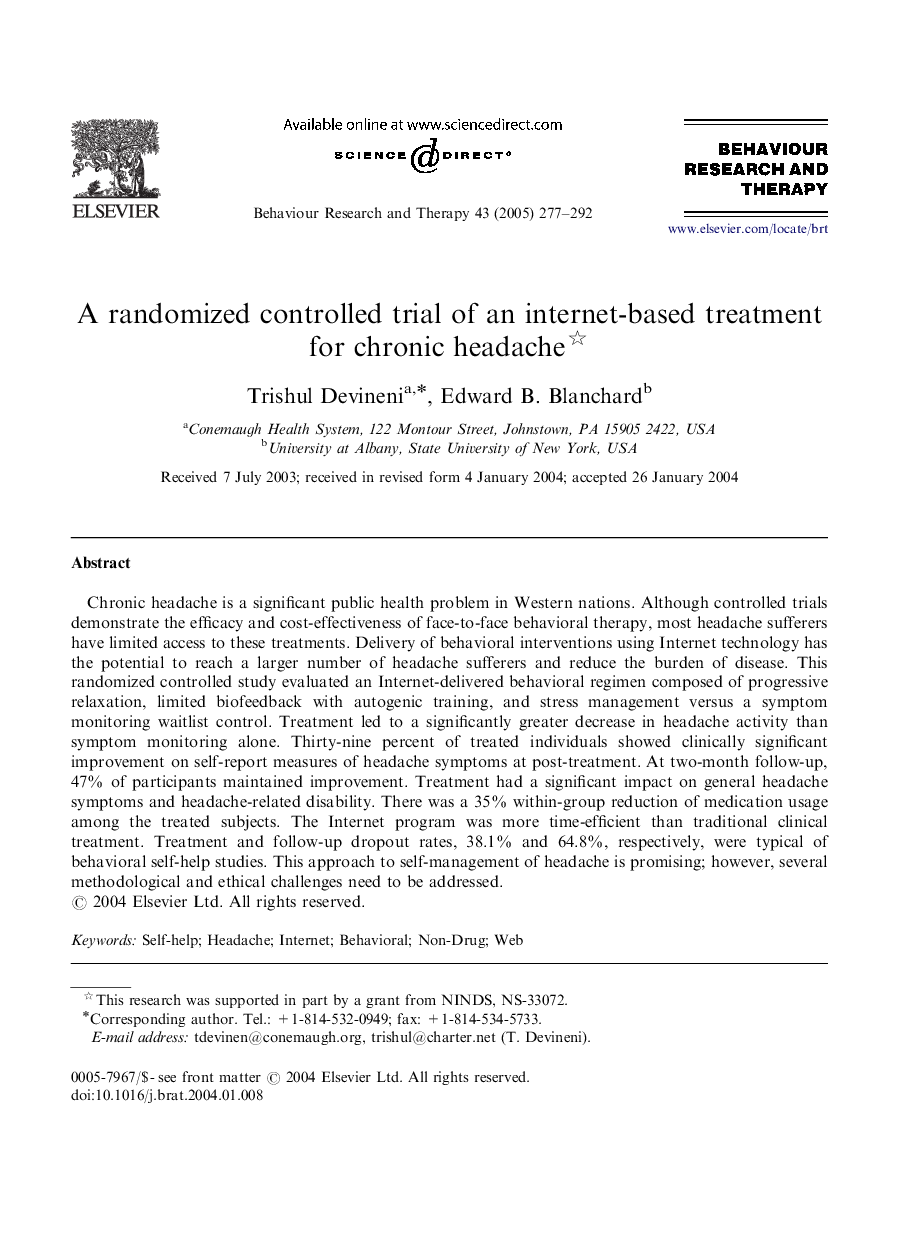| Article ID | Journal | Published Year | Pages | File Type |
|---|---|---|---|---|
| 10445160 | Behaviour Research and Therapy | 2005 | 16 Pages |
Abstract
Chronic headache is a significant public health problem in Western nations. Although controlled trials demonstrate the efficacy and cost-effectiveness of face-to-face behavioral therapy, most headache sufferers have limited access to these treatments. Delivery of behavioral interventions using Internet technology has the potential to reach a larger number of headache sufferers and reduce the burden of disease. This randomized controlled study evaluated an Internet-delivered behavioral regimen composed of progressive relaxation, limited biofeedback with autogenic training, and stress management versus a symptom monitoring waitlist control. Treatment led to a significantly greater decrease in headache activity than symptom monitoring alone. Thirty-nine percent of treated individuals showed clinically significant improvement on self-report measures of headache symptoms at post-treatment. At two-month follow-up, 47% of participants maintained improvement. Treatment had a significant impact on general headache symptoms and headache-related disability. There was a 35% within-group reduction of medication usage among the treated subjects. The Internet program was more time-efficient than traditional clinical treatment. Treatment and follow-up dropout rates, 38.1% and 64.8%, respectively, were typical of behavioral self-help studies. This approach to self-management of headache is promising; however, several methodological and ethical challenges need to be addressed.
Related Topics
Health Sciences
Medicine and Dentistry
Psychiatry and Mental Health
Authors
Trishul Devineni, Edward B. Blanchard,
